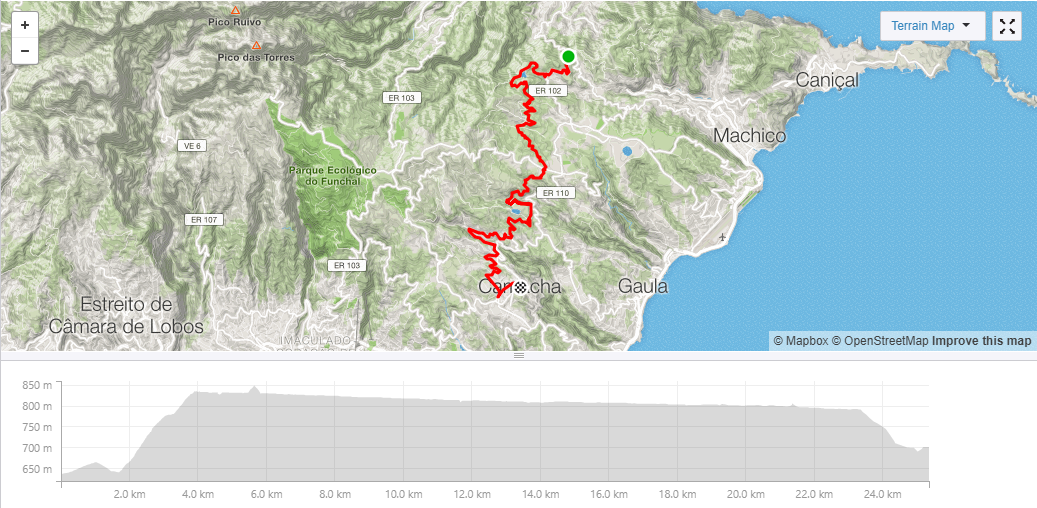Is Madeira the ultimate adventure destination?
If you like climbing, you’ll love Madeira


Madeira is steep. Even in the capital, Funchal, there’s little flat and roads climb at alarming angles away from the seafront, without any concessions to the cyclist. Get out of town and you’ll be rewarded with sparse traffic and exhilarating views down to the coast.
A volcanic outcrop only 57km by 22km, Madeira’s highest point is over 1800m above sea level. The upper reaches of the island are forested with eucalyptus and the native laurissilva trees. And running through the forests is a network of levadas.

These irrigation channels are cut into the sides of the hills to carry water to cultivated areas. The paths that run alongside them provide a more gentle route to and from the back country than the road network.
>>> Get better at climbing hills: top tips to speed up your ascents
We followed the levadas down from the eastern end of the island towards Funchal on the recent launch of the Kona Libre gravel bike on Madeira. The one we used had quite a wide path next to it and not too much of a drop off the side; some are much more precipitous and require a good head for heights.

One side-effect of Madeira’s geography is that weather in the hills can be very different from that on the coast. Setting off by minibus in warm sunshine to travel to the start of the ride, we were met at our destination by intermittent heavy rain and temperatures around 10C, although this soon cleared up. In the winter, the mountains can get snow; it’s a good idea to travel prepared.
>>> Kona now has an e-cargo bike
The latest race content, interviews, features, reviews and expert buying guides, direct to your inbox!
In places, trees had fallen across the levada. These were usually propped up by the slope on either side and so we could ride under them easily. With the irrigation channel next to it, the surface of the path was often damp, but not too muddy or slippery. We met a few groups of mountain bikers and walkers and crossed a few back roads, but otherwise had the route to ourselves.
A steeper ride on the west side of the island
At the western end of the island, we took on a steeper descent through the forest, followed by a spectacular tarmac drop from Faja Da Ovelha to the sea at Paul do Mar.

A short climb on an uneven back road brought us to the top of a wide track descending through the forest. Some parts were steeper and wet, while most were wide and gravelly. Here there were ruined buildings and we encountered horned cattle sat in the middle of the track, but no people.

Finally reaching a village, where corn cobs were drying in the sun, we took some well-maintained levadas with concreted paths next to them, which brought us to the top of the road down to the coast. This offered amazing views and an equally amazing decent, complete with hairpins, tunnels and a final race along the coast road.

Porto Santo island
A three hour ferry ride, or 15 minutes by air, from Funchal is the neighbouring island of Porto Santo. With links to Christopher Columbus, it’s much lower than Madeira.

This means that it is drier and more gravelly as it doesn’t generate its own weather so much. But don’t think it’s flat: in 40km riding round the island we climbed 1000m, with some long, steep ascents on tarmac towards the eastern end.
>>> Best cycling holidays 2019: where to go, how to plan your trip and what to pack

The dry gravel tracks along the largely deserted north coast provide some spectacular riding above the rocky cliffs. There’s a fast, flat road along the sandy beaches on the south of the island through its principal town and back to the ferry port. There’s also a long tarmac ascent to the lookout at Pico do Castelo if you fancy yet more climbing.

Again, we encountered intermittent light drizzle on Porto Santo, but this was more a relief from the sun than an inconvenience.
Getting to Madeira
An overseas territory of Portugal, Madeira lies some 1000km off the coast of Europe and 500km off Morocco. It’s 400km north of the Canary Islands.
Madeira has direct flights of around three to four hours from several UK airports. You can also fly via Lisbon, with TAP being the airline with the most frequent services to Funchal’s airport.
It was even difficult to find enough space for the airport on Madeira; the runway is partially built on stilts over a ravine and has a slope to it.
Paul started writing for Cycling Weekly in 2015, covering cycling tech, new bikes and product testing. Since then, he’s reviewed hundreds of bikes and thousands of other pieces of cycling equipment for the magazine and the Cycling Weekly website.
He’s been cycling for a lot longer than that though and his travels by bike have taken him all around Europe and to California. He’s been riding gravel since before gravel bikes existed too, riding a cyclocross bike through the Chilterns and along the South Downs.
